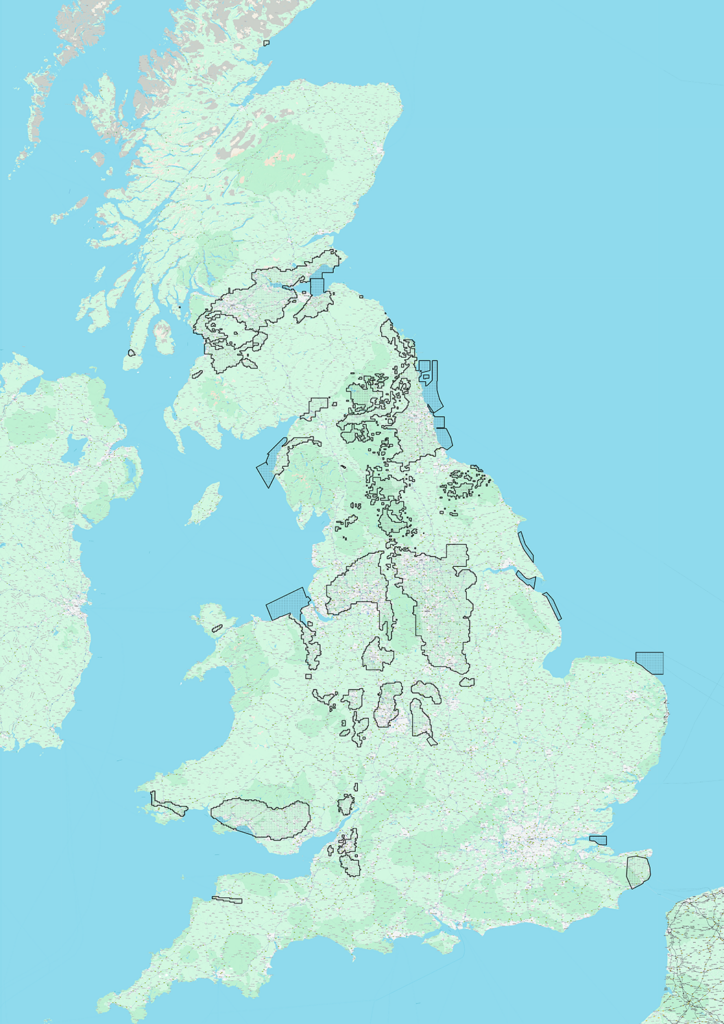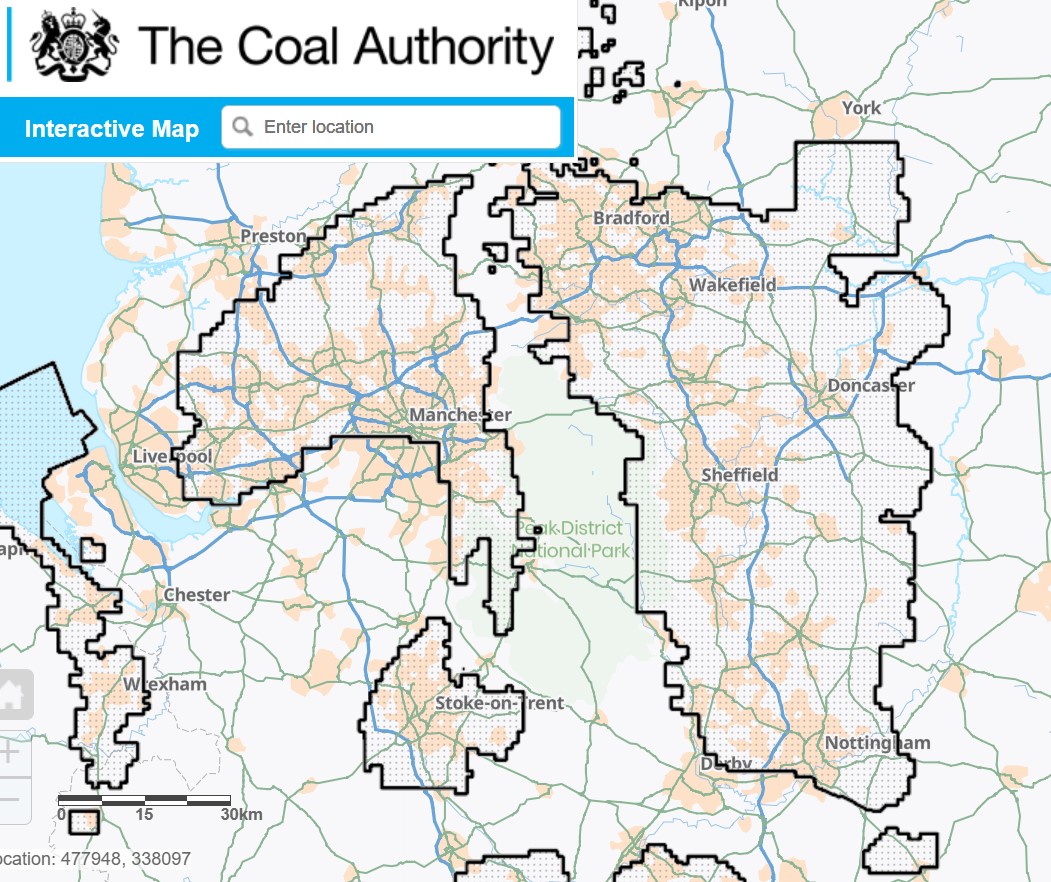Coal is formed when dead plant matter becomes submerged and buried in wet oxygen free environments such as swamps. During the Carboniferous period (359 to 299 million years ago) the UK and many other landmasses around the world were dominated by low-lying wetland forests and swamps, providing the perfect conditions for coal formation. Over subsequent millions of years the decaying organic sediments became deeply buried, where increasing heat and pressure transformed the rocks into coal. Tectonic uplift and erosion have resulted in some of these coal layers coming back to the surface and accessible shallow levels where they can be mined.
In the UK, the mining of coal dates back to the pre-Roman era, where small scale extraction of relatively easily accessible sources was used for heating and small-scale industrial processes; however, due to the Industrial Revolution the demand for coal soared during the 18th and 19th centuries leading to largescale extraction from numerous coalfields across the country.
Coal was, and still is in many parts of the world, a vital energy resource due to its abundance and high energy content; however, since it peak in 1913 the demand for coal in the UK has declined due to various reasons but since the 1960s due to more stringent environmental regulations the rise of cheaper, cleaner alternatives like natural gas and renewables and also cheaper imports. Government policies targeting a low-carbon energy mix and public pressure for improved air quality have accelerated this shift.
Coal seams are frequently underlain by what is called seatearth, which is an organic, structureless mudstone. High quality seatearths were often called fireclays due to their ability to resist heat and were therefore important in the production of refractory bricks, used in kiln linings, but were also used for chimney pots, brick making and clay pipe production. Fireclays could either be extracted with the coal or independently with poor quality coals being ignored and the fireclay extracted.
Areas in the UK Impacted
The UK coalfields are spread over several key regions:
- South Yorkshire and Nottinghamshire: Covers the area around Sheffield, Doncaster, and Nottingham.
- Northumberland and Durham: Situated in northeastern England, encompassing areas like Newcastle and Durham.
- East, South and West Midlands: The East and West Midlands had significant mining operations, including the Staffordshire, Shropshire, Warwickshire and Leicestershire (not too far from our head office) coalfields.
- Lancashire: Notably to the north of Manchester including St Helens, Wigan, Oldham, Bury and Bolton and further north around Blackburn and Burnley.
- South Wales Coalfield: Located in southern Wales, extending from Cardiff to the western valleys.
- Central Belt of Scotland: Extends from Glasgow to Edinburgh and up to Fife, covering the central region of Scotland.
Whilst the above coalfields are the main areas where coal bearing strata is encountered, other localised areas of coal mining can be found in Kent, Bristol, Gloucestershire, Somerset, the Forest of Dean and Cumbria. There are also areas of the Yorkshire Dales where coal has been exploited from non-Carboniferous rocks.
The British Geological Survey / Coal Authority map opposite shows areas of Britain where historic coal mining could have an impact on development sites.

British Geological Survey /Coal Authority materials © UKRI 2024
There are four main methods used to Mine Coal:
- Bell Pits: Among the earliest forms of coal mining, bell pits were commonly used from the medieval period until the early 19th century. These shallow shafts were dug into the ground with a bell-shaped cavity at the bottom where coal was extracted. Once the cavity became too dangerous due to collapse risks, a new pit would be started nearby. Bellpits will have been used locally in most regions of the UK where ironstone was present close to the surface.
- Adit Mining: Horizontal passages driven into a hillside to reach coal seams.
- Open Cast Mining: Involves removing large areas of soil and rock to access coal seams near the surface.
- Shaft Mining: Vertical shafts sunk to reach deeper coal seams, with extensive underground networks.
Risks to Developers and Landowners
Whilst the government mandated that mine owners had to provide abandonment plans in the Coal Mines Regulation Act 1872, mine entries and underground mining is often unrecorded and present at shallow depth (less than 30m deep). The subsequent voids can lead to a number of problems when a development is proposed at the surface. These risks include:
- Land Subsidence: The collapse of old mine workings and entries can cause ground subsidence, damaging buildings and infrastructure.
- Land Settlement: Where development are proposed over former opencast sites which have been backfilled, there can be issues associated with settlement of buildings and infrastructure, especially if they are built over the high wall.
- Gas Emissions: Abandoned mines and mine entries can release methane and other gases, posing explosion or health risks if they remain unflooded.
- Contamination: Colliery spoil can contain contaminants such as heavy metals and hydrocarbons. Acid Mine Drainage can also pose a risk to controlled waters.
Treatments and Mitigation
Addressing the impacts of historical coal mining involves several strategies:
- Ground Stabilisation: Where mine workings and entries have been identified that may pose a risk to surface stability, these are typically mitigated by pressure grouting the disturbed soils and placing reinforced concrete caps at rockhead above mine entries.
- Ground Improvement: Where settlement is a particular issue, mitigation is likely to involve a combination of methods looking at foundation types and land improvement such as surcharging, dynamic compaction and stabilisation.
- Gas Venting Systems: Installing systems to safely vent gases from former mine workings, or installing protective measures into new buildings above the workings.
- Contamination: Sites built on former collieries are likely to require some form of capping in garden areas to protect end users. Mine water treatment may also be required to protect surface and groundwater.
Understanding the history and legacy of coal mining is essential for managing its impacts. By recognizing the risks and employing effective mitigation strategies, developers and landowners can safely navigate the challenges posed by historical coal mining.
GRM has a wealth of experience and expertise in the mining sector, indeed it is something of a specialism given the background of the two founding Directors (see GRM History page). We continue to work with a range of clients from large commercial developments to private homeowners who use our expertise to identify both recorded and unrecorded coal mine workings, and, where found, implement solutions that allow their projects to reach completion. Some examples of client projects related to coal mine workings can be found via the following links:
If you have any development or construction projects that may be impacted by historical mining workings and hazards, then please get in touch to find out how we can help save both time and costs. Please use your main point of contact at GRM or for new enquiries email richard.upton@grm-uk.com or call 01283 551249.


